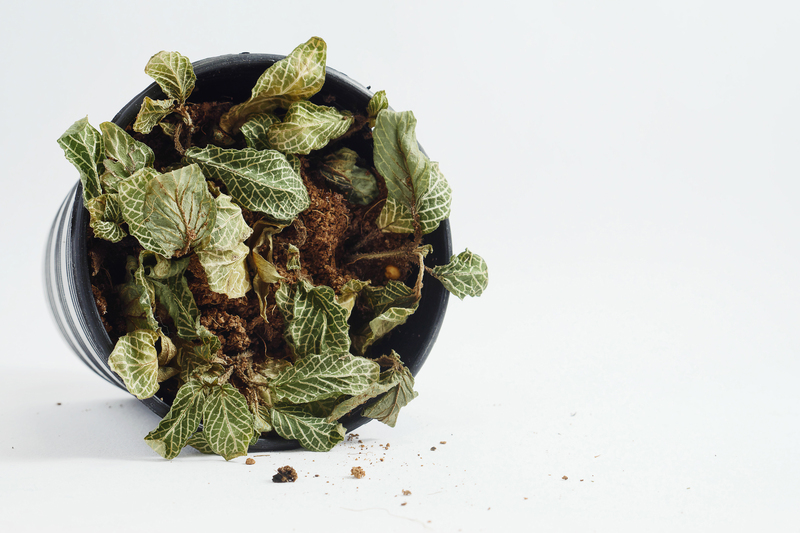Key Elements of Lawn Care Treatment Plans
Posted on 09/03/2025
Maintaining a lush, green lawn isn't as simple as watering it from time to time or mowing it every other weekend. A beautiful lawn requires a well-thought-out lawn care treatment plan, addressing a variety of factors that contribute to its overall health. Below, we explore the key elements of an effective lawn care treatment plan, ensuring your turf thrives year-round.
Soil Testing and Analysis
The foundation of any successful lawn care treatment plan begins with understanding your soil. Soil testing determines the current pH level, nutrient content, and overall soil health. This crucial information helps in customizing a treatment plan that targets specific deficiencies and imbalances.
- Nutrient Levels: Through soil testing, you'll understand which nutrients are abundant and which ones are lacking. For instance, lawns often need nitrogen, phosphorus, and potassium to thrive.
- pH Levels: The pH level of soil affects nutrient availability to plants. Most grasses prefer a pH between 6.0 and 7.0. Soil testing helps in determining if lime or sulfur applications are needed to adjust the pH.
- Soil Composition: Knowing the composition, whether it's sandy, loamy, or clay, provides insight into water retention and aeration needs.

Lawn Fertilization
The right fertilization strategy forms the backbone of any lawn care treatment plan. Fertilizers provide essential nutrients that plants need for growth, color, and resilience.
- Types of Fertilizers: There are various types of fertilizers, including granular and liquid forms, synthetic and organic options. Each type has its advantages and application methods.
- Application Timing: The timing of fertilization is crucial. Most lawns benefit from fertilization in early spring and fall. However, the exact schedule can vary depending on the type of grass and climate.
- Balanced Nutrients: A balanced fertilizer provides nitrogen (N), phosphorus (P), and potassium (K) in appropriate ratios. Some fertilizers also contain micronutrients like iron and magnesium that further enhance turf health.
Weed Control
Weeds are the bane of any well-maintained lawn. Effective weed control involves a combination of pre-emergent and post-emergent herbicides, along with cultural practices that promote a dense, healthy turf that crowds out weeds.
- Pre-Emergent Herbicides: Applied before weeds germinate, these herbicides create a barrier that prevents weed seeds from sprouting. They are particularly useful against annual weeds.
- Post-Emergent Herbicides: These are used to kill existing weeds. Selective herbicides target specific weed species without harming grass, while non-selective herbicides kill any plant they come into contact with.
- Cultural Practices: Mowing at the correct height, proper fertilization, and appropriate watering can help maintain a thick lawn that naturally suppresses weeds.
Proper Watering
Watering your lawn correctly is more complex than simply running the sprinkler for a few minutes. The goal is to provide sufficient moisture without over-watering, which can lead to various problems such as disease and root rot.
- Water Quantity: Lawns typically require about 1 to 1.5 inches of water per week, including rainfall. Use a rain gauge or a tuna can to measure how much water your sprinkler system delivers.
- Watering Frequency: Water deeply and infrequently rather than shallow and frequently. This encourages deep root growth, enhancing the lawn's drought resistance.
- Best Time to Water: The early morning is the best time to water your lawn. Watering in the middle of the day leads to evaporation waste, while nighttime watering can encourage disease due to prolonged moisture on the grass blades.
Mowing Practices
Mowing isn't just about keeping your lawn looking neat. Proper mowing practices are essential for maintaining grass health and preventing issues such as scalping and disease.
- Mowing Height: Different grass species have specific mowing height recommendations. Generally, it's advisable to mow grass at a height of about 2.5 to 3.5 inches, but this can vary.
- Mower Blades: Keep mower blades sharp to ensure clean cuts. Dull blades tear the grass, leading to ragged edges that can invite disease.
- Mowing Frequency: Regular mowing is crucial, but avoid cutting more than one-third of the grass blade length at any single mowing. This practice reduces stress on the grass and promotes a more dense and robust lawn.
Aeration
Aeration is a vital, yet often overlooked, element of lawn care. This process involves removing small plugs of soil to improve air, water, and nutrient movement to the grass roots.
- Types of Aeration: Core aeration is the most common method, but spike aeration can also be effective. Core aeration is generally more beneficial as it actually removes plugs of soil, providing more room for roots to expand.
- Timing: Aerate lawns when the grass is actively growing. For warm-season grasses, this means late spring to early summer. For cool-season grasses, late summer to early fall is ideal.
- Follow-up Care: After aeration, applying fertilizer and overseeding can help the lawn recover and thrive. The holes created during aeration facilitate better seed-to-soil contact, promoting new growth.
Pest Control
Pests such as grubs, chinch bugs, and sod webworms can wreak havoc on an otherwise healthy lawn. Effective pest control is a critical aspect of any lawn care treatment plan.
- Identification: Properly identifying the pest problem is the first step. Each pest has specific signs and symptoms that they are present.
- Treatment Options: Both chemical and organic pesticide options are available. The choice depends on the severity of the infestation and the homeowner's preference.
- Preventive Measures: Maintaining a healthy lawn through proper watering, fertilization, and mowing can help prevent pest problems before they start.

Seasonal Lawn Care
Each season requires different lawn care techniques to keep your turf in peak condition. Tailoring your treatment plan to seasonal needs ensures long-term health and vitality.
- Spring: Focus on soil testing, fertilization, and pre-emergent weed control. This season sets the stage for vibrant growth.
- Summer: Concentrate on watering, pest control, and mowing to combat heat stress and manage peak growing conditions.
- Fall: This is the time for aeration, overseeding, and applying a balanced fertilizer to prepare your lawn for winter and ensure robust growth in spring.
- Winter: Conducting a soil test and planning for the next year can be beneficial. Minimal maintenance is required as most grasses go dormant.
Conclusion
Creating and maintaining a vibrant lawn requires a comprehensive approach that addresses soil health, nutrient management, weed and pest control, proper watering, and mowing practices. By understanding and implementing the key elements of a lawn care treatment plan, you can ensure that your lawn remains lush, green, and healthy throughout the year. Regular monitoring and adjustments based on seasonal changes and observed lawn conditions will enable you to address challenges promptly, leading to a lawn that is both beautiful and resilient. Investing time and effort into a structured lawn care routine pays off in the form of enhanced curb appeal, increased property value, and a pleasant outdoor space for relaxation and recreation.





 Certified and experienced landscapers
Certified and experienced landscapers




 Get a Quote
Get a Quote